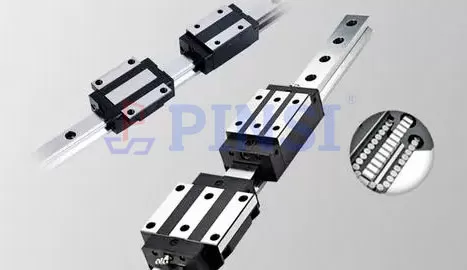
1. Material selection and quality
The material of linear guide is one of the important factors affecting its price. Different materials have different costs and properties. Usually, linear guides can be made of aluminum alloy, steel and other materials. Aluminum alloy guide rails are relatively light, have good corrosion resistance, and are suitable for applications with faster speeds and smaller loads, while steel guide rails have higher strength and load-bearing capacity. Therefore, the selection and quality of materials are directly related to the price of linear guides.
2. Accuracy level and process level
The accuracy level and workmanship level of linear guides also have a great impact on the price. High-precision linear guides require more stringent production processes and precision equipment, so the price is relatively high. Generally speaking, the accuracy levels of linear guides are usually three levels: P, H and N. Each level has different manufacturing processes and quality requirements, resulting in price differences.
3. Length and form
The length and form of linear guides are also important factors affecting their price. Longer linear guides require more materials and processing technology, so the price is relatively higher. At the same time, the form of linear guides will also have an impact on the price. Different forms such as slider type and ball type have different manufacturing processes and performance characteristics, resulting in price differences.
4. Brand and visibility
Brand and popularity are another important factor affecting the price of linear guides. Well-known brands of linear guides usually have good quality assurance, after-sales service and technical support, so the price is relatively high. In comparison, the prices of linear guides from some small brands or non-famous brands may be relatively low, but there are certain risks in terms of quality and service. Therefore, when selecting linear guides, brand reputation and product cost-effectiveness need to be considered comprehensively.
5. Market supply, demand and competition level
Market supply, demand and competition levels will also have an impact on the price of linear guides. When market demand is high and supply is relatively tight, linear guide prices may rise; conversely, when market supply is sufficient and demand is not strong, prices may fall. The degree of competition will also affect pricing strategies. In fiercely competitive markets, there are usually price wars, which will lead to a decrease in linear guide prices.

6. Transportation, logistics and transportation costs
Transportation logistics and transportation costs are also one of the important factors affecting the price of linear guide rails. Linear guides are usually heavy mechanical components, and logistics costs need to be considered during their transportation and distribution. Increases in transportation costs may increase the price of linear guides, especially in remote areas or in international trade.
7. Technological Innovation and R&D Costs
Technological innovation and R&D costs are also important factors affecting the price of linear guides. With the continuous advancement of science and technology, new materials, new processes and new designs continue to emerge, making the performance of linear guides continue to improve. This kind of technological innovation and R&D investment will increase the cost of linear guides, thus affecting their prices.
8. Market price fluctuations and conditions
Market price fluctuations and conditions are temporary factors that affect linear guide prices. Fluctuations in raw material prices, inflation and instability in the macroeconomic situation will all have an impact on the price of linear guides. This short-term market change causes linear guide prices to continue to adjust.
The price of linear guides is affected by many factors, including material selection and quality, accuracy level and process level, length and form, brand and popularity, market supply and demand and degree of competition, transportation logistics and transportation costs, technological innovation and R&D costs, market price Fluctuations and conditions, etc. When selecting and purchasing linear guides, we should comprehensively consider these factors and conduct a comprehensive evaluation based on actual needs to obtain the most cost-effective product.


 +8615622924499
+8615622924499
 +8615622924499
+8615622924499

